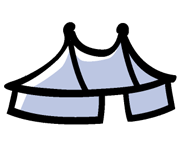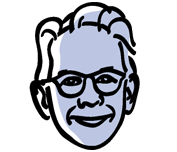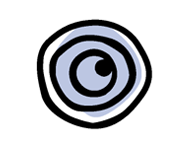Interview with Bernard Kudlak
By Laurent Gachet, Arts de la Piste n°13 (April 1999)
A founding member of Cirque Plume, Bernard Kudlak writes and works on the conception of the company shows that he then directs.
When one is not born into the circus, why and how does one choose circus as an artistic direction ?
The first memory I have of receiving an artistic jolt was in 1969 while watching (Andrei) Tarkovski’s film, Andreï Roublev, which revealed to me a heretofore unsuspected universe. This reference has always remained epochal. Also, companies such as Bread & Puppet, le Living Theatre, in other words theatre that was out of the ordinary in the ’70s, gave me a desire to perform this type of show.
The imaginary world of the circus is a lot larger than than its reality. I started doing shows in an era when the question of freedom and the desire to change one’s life were at the heart of our preoccupations. We were attracted to theatre, but institutional theatre seemed rather dusty to us, like wheezing monsters, purring and drowsy. We had no idea that the rest of it could serve our purpose of fulfilling our desires and following our ideals. Perhaps equally so, we chose this direction due to a lack of theatrical know-how.
The circus enchanted us with its nomadism, its mythology, and the fact that it was a popular, accessible art form, even though we had little knowledge of circus reality (I saw my first circus show at the age of 24). In addition, there was a natural bridge between circus and the street shows, festivals, and parties (in the era that a book appeared entitled, " La fête, cette hantise !", Autrement collection, trimester edition number 7, November 1976) that we were doing at the time. We parted the circus curtains and had the impression we had discovered a treasure. We wanted to interact with people, to have a language, maybe not a universal language, but in any case, one that was common and wide-ranging. We found this language. On top of that, when we started up, the circus was long unexplored by anything new. For the last fifty years its form had changed little. It was an incredibly malleable material, so rich in mythology, images and poetry that it was a true marvel to stick one’s nose into.
Cirque Plume founded a "poetico-familial" style through the course of its productions. How do you position your heritage and your aesthetic rupture with the group of circus creators, whether it be theoretical or researchoriented ?
The qualifier "poetico-familial" comes from 1988, and was a journalist’s remark, mocking at the very least, disdainful at the worst. Disdain for "the other" is the most common characteristic in humans, who all want to belong to some aristocracy or some other distinction. In short, we as primates want to "belong" (as opposed to "be") at all costs, and attitudes of exclusion and disdain drive us towards, in the extreme, the lovely massacres that have satisfied us during this century. This theme is present in the show were are in the process of creating, Mélanges. Words and their associations are not innocent when you evoke "poetico-familial", which sounds sort of like "socio-communist", which reduces a reality to a play on words in order to better negate something. Furthermore, do not mix up the terms general public and familial. We’ve created shows with an identifiable style, popular shows, while trying to use a language accessible to a great number of people, to do shows they can be involved in. We do not situate ourselves using heritage or rupture, but have nourished ourselves on everything that came before us, whether in reality or in depiction, to create today’s shows. We live in the present ; I do not believe in the idea of progress in art. I have an intuition concerning the unity of human thought in space and time. I sense that in Cirque Plume’s interrogations lie the same questions of 10,000 years ago, the same paths to follow. Artistic projects do not fall from the sky, they inscribe themselves into an era and into existence. Circus brings with it a richness of language that can cross cultural and geographical boundaries while remaining highly artistically demanding. In addition, it is a popular art form and the term "popular art form" is not a bad word, and has no business being used as an object of economic selection, nor a social indicator of adherance to the ruling class. A circus show is proof, by its very being, that the sun, the dew, the fog, the night, tenderness, love, absurdity, and a nostalgia for knowledge are the driving.
You write the Cirque Plume shows. How do you imprint your artistic approach in the midst of pieces of collaborative work that your company calls for ?
It is, effectively, collaborative work starting from a written or sketched project. I feel like an author sharing the task with the other actors in our realizations. I often go off on a tangent, very exterior to the show, out of a necessity to talk about a certain subject triggered by something in life : something I am living or something I see. Then I write a discourse for myself : what will we say and why ? After that, I construct a plot from these intentions, the theme, the descriptions of the characters involved, and a certain number of acts or suggestions for acts. I then talk to Robert Miny, who writes the music. The music is half of a Cirque Plume show. I propose all this to the artists. After that, we rehearse for three and a half months. There, through collaborative work of give and take between the troupe members, the composer, and this year, the choreographers, the acting directors and me, we construct a show within the framework of the plot. I am in charge of the show’s global nature, a style which identifies Cirque Plume.
How do you define the theatrical approach in the Cirque Plume creations ?
Perhaps today’s circus is realizing the great dream of the 1920’s and 1930’s : to create a complete show. At the moment, if we hold to this idea, text is often stll missing in circus shows which use all the other techniques. There is the question of time, of the specificity of time in theatre, time in dance, time in circus, which are not all the same, that do not work in the same way. Dance is closer to circus in terms of time : time is very immediate. On the contrary, a theatrical moment is a historical moment, offset and fictitious ; an indication is more important than the present moment. The indication of a juggler, in theatre, is enough to show a juggler, we do not need a juggling act as well. And yet, there are fringes of convergence between these different narrations. It is these border zones that are interesting.
You often defend the legitimacy of an artistic act by pointing to a largepublic audience. What do you think today about this idea ?
Does it not come from the necessity to keep alive a big "machine" with the current importance of Cirque Plume, and can we talk about critical size, the balance of the artistic and the economic ? I do not defend that at all, that is a simplistic idea. By definition, a live show only exists through an audience, and no form of live show is created for empty seats. Also, playing for a large audience is a dream, and a political idea. I am the child of a factory worker. I experienced social segregation, and it is only natural that I search for the utopia of the most universal mode of expression possible. Jean Vilar dreamed of theatre plainly understood by an eleven year-old child, by a stonemason, or by an actor from the Comédie-Française... Good grief, pleasure, the pleasure of playing for a packed big-top every night, the pleasure ? It doesn’t indicate either the genius or the mediocrity of a show. It indicates that people want to see your creations. We practice this profession in order to share our humanity with those like us - and up until now, it’s going great. The goal of a creation is to be seen and understood, not to be the subject of intellectual discussions in magazines (we appreciate that they exist, we need reviews, but we do not create for them). We create our shows in the same way you write a poem, and for the same reasons : a caveman’s song, the last ray of sun on the summit of an ash tree, the butchery from 1914-1918 that began the modern world and the scars we still carry, for our joy, for our ancestors, for our children, for life, and because we are all going to die and that is hard to believe, is it not ? To share all this, we have forged formidable tools : a venue holding one thousand seats, which responds to a public demand, and is not any bigger because of our eyes ; they are the limit between the commercial and the artistic. To each his own. The important thing is not the size but coherence. The cost of a seat in a traveling big-top of a creative circus does not depend on the size of the establishment. It is the same at Plume as it is at Convoi Exceptionnel. The economic question concerns the fact that our show venues are not helped economically like all the other non-commercial venues in France and Navarre : this must change and we must take into account the cost of the intinerant nature of our cultural enterprises.
Is it necessary, in your opinion, to specifically define a writing and directing methodology specific to circus ?
I do not think so.
Your next show is called Mélanges. Should we expect an assertion of fusion, a certain artistic decompartmentalization ?
What is your next manifesto, your vision of the world delivered through this show ? Absolutely, it is in the fusion, in real exchanges and decompartmentalization that we can be and artist and a man today. The artist is a revealer. He’s simply a being from a certain society, at a certain moment in time. Whatever he will do, he will not do it alone. As Laborit said (translator’s note : a French physician, writer and philosopher) we are the others. And I think that is even more valid for artists. Cirque Plume is made up of parts that come from the world around us. Mélanges is the world of tomorrow. It is still possible.








